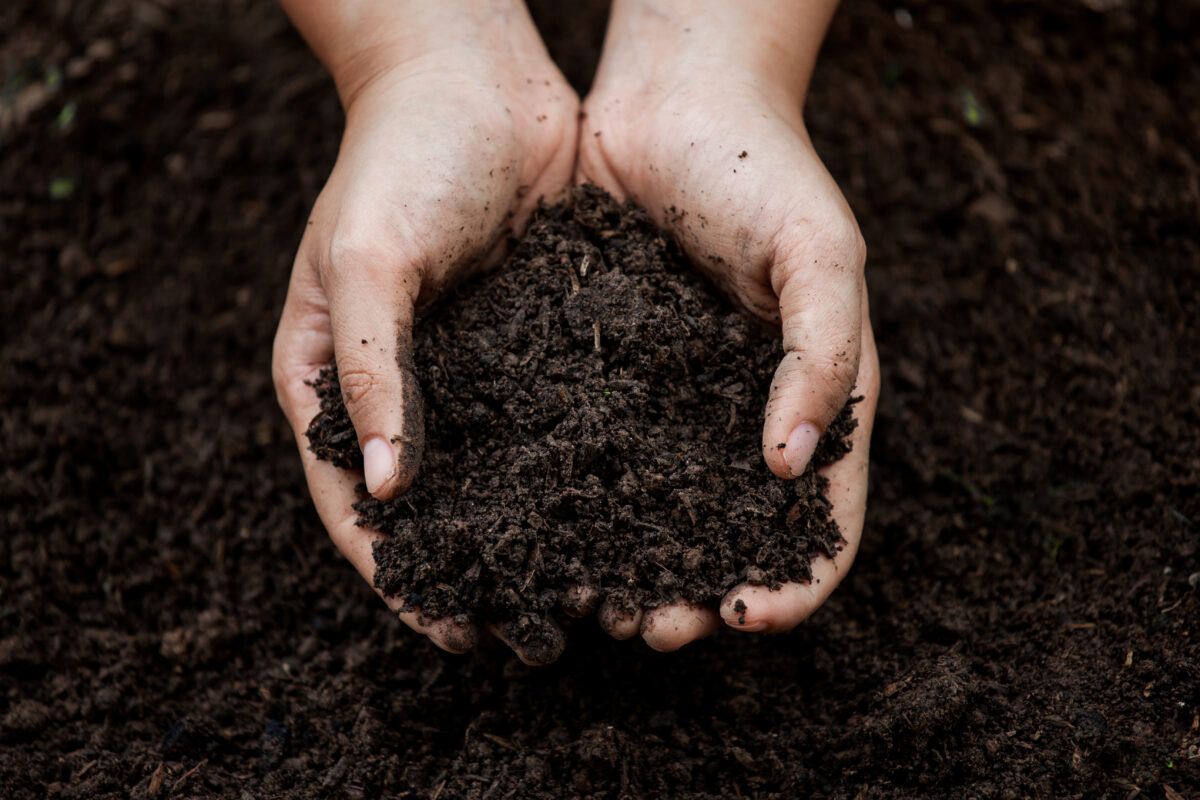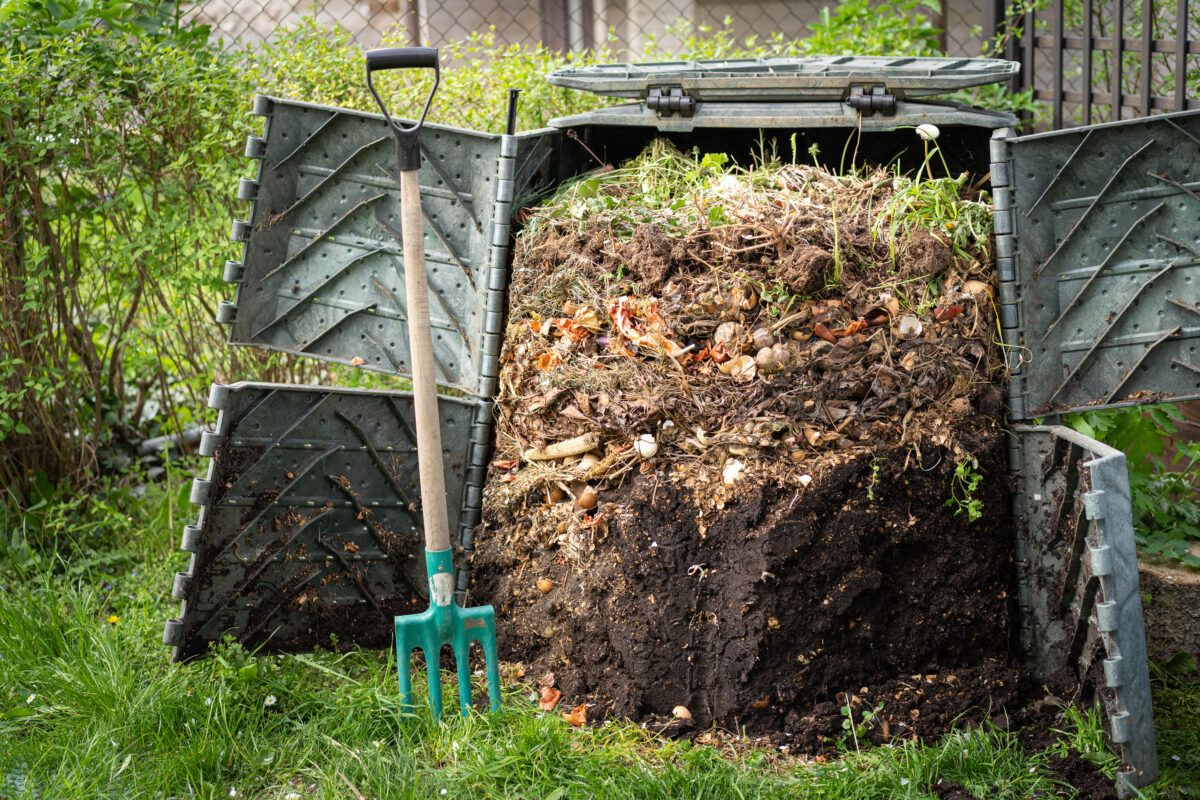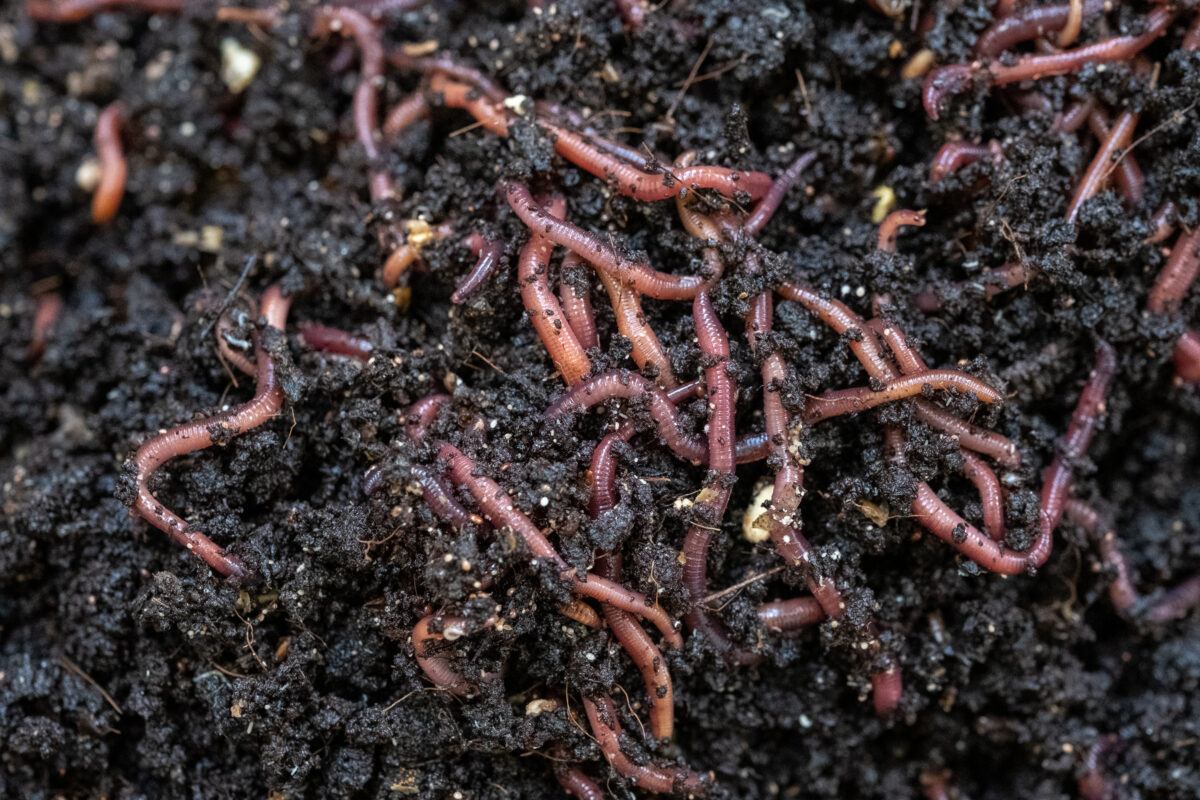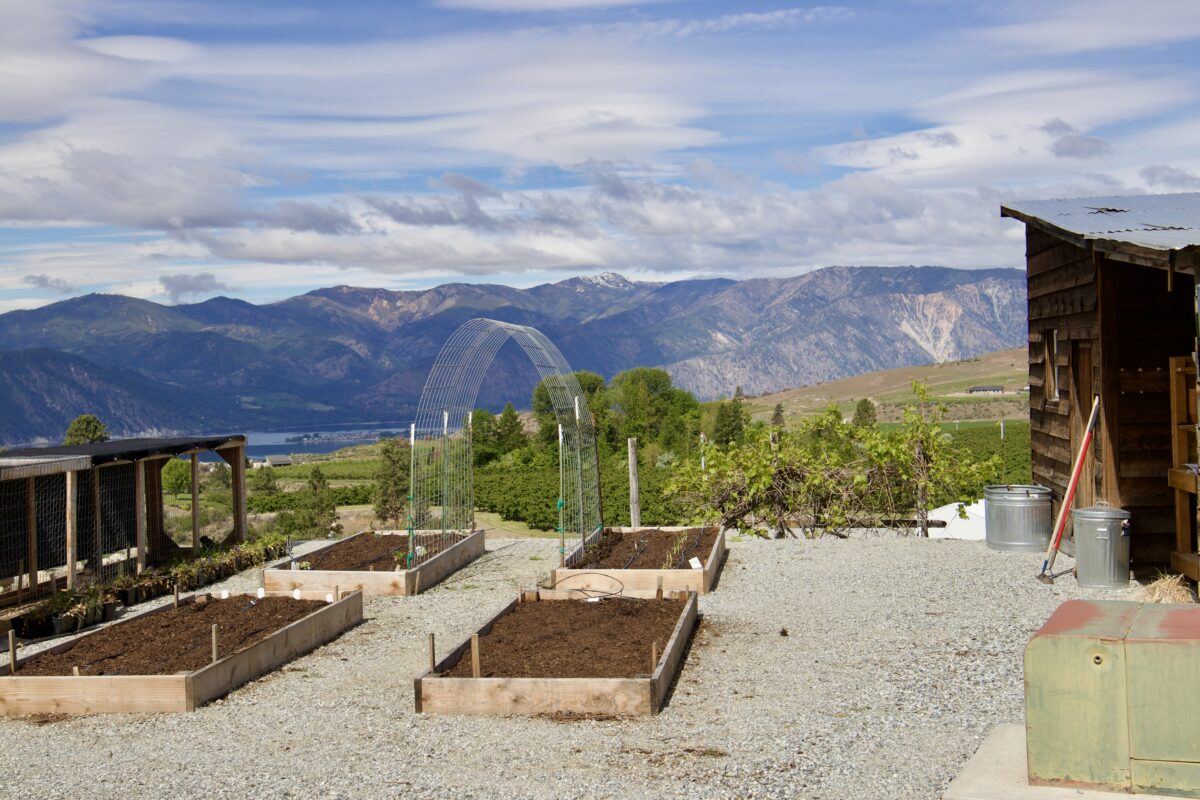Composting for Beginners

Soil in hand for planting
Embarking on the path of composting for beginners is more than a mere leap toward sustainable living. It’s an immersive connection to the natural cadence and the transformative prowess inherent in decay. The journey involves transforming everyday kitchen scraps, yard waste, and select packaging materials from Chelan Ranch Organics into the revered ‘black gold’ that nourishes your garden.
At the same time, the prospect might initially seem overwhelming but fear not. Composting is an accessible, gratifying practice open to all. Leveraging my expertise in organic farming and master gardening, I’ll demystify the fundamentals, providing a clear roadmap for those venturing into composting for the first time. Brace yourself to witness the enchanting alchemy of decomposition and cultivate a more profound, vibrant bond with the Earth.
The Basics of Composting

Composting, at its core, is a natural and sustainable alchemy that transforms organic materials into nutrient-rich soil. The basics of composting go beyond a mere disposal method; they entail cultivating an environment conducive to decay.
The practice begins with setting up a designated compost area or bin. Selecting the right location is crucial; find a discreet spot that enjoys a balanced blend of sunlight and shade and is conveniently close to a water source, as moisture is essential for decomposition. Take care to avoid sites beneath trees. Tree roots tend to swiftly infiltrate the lower layers of compost, disrupting the process. Don’t give up if you have limited space. Consider the possibility of indoor composting with a specialized container for a more confined yet equally effective composting experience.
An outdoor location gets the best results using an enclosure with slatted sides to allow air movement. Make one open side for turning and removal of the compost. Materials for compost enclosure include scrap lumber, woven wire fencing, chicken wire, and cement blocks. I use an old wood bin with open slats on three sides. I have three large perforated PVC pipes at the base to allow more air movement. For detailed information on constructing an outdoor compost enclosure, see At Home Composting.
Composting Essentials For Decomposition
#1 Green and brown materials
Green Materials (Nitrogen Sources):
- These materials provide nitrogen, essential for the growth of microorganisms that break down organic matter. Examples include:
- Kitchen scraps (fruit and vegetable peels, coffee grounds)
- Fresh yard waste (grass clippings, green plant cuttings)
Brown Materials (Carbon Sources):
- Brown materials provide carbon, helping to create the proper carbon-to-nitrogen ratio for efficient composting. Examples include:
- Dried leaves
- Straw
- Shredded newspaper or cardboard
- Excelsior wood fibers in Chelan Ranch Organics packaging are 100% biodegradable.
- Chelan Ranch Organics’ cherry bags made of plant-based polymers
#2 Balanced Carbon-to-Nitrogen Ratio
- Achieving a balanced C: N ratio (around 25-30 parts carbon to 1 part nitrogen) is crucial for effective composting. This balance ensures that microorganisms have the proper nutrients to efficiently break down the organic matter.
#3 Aeration
- Regularly turn or aerate the compost pile to introduce oxygen. Oxygen supports aerobic decomposition, fostering the activity of beneficial microorganisms.
#4 Moisture
- Maintain adequate moisture levels, similar to a wrung-out sponge. Moisture supports microbial activity, ensuring efficient decomposition.
#5 Microorganisms
- Beneficial bacteria, fungi, and other microorganisms are crucial in breaking down organic matter. These microorganisms thrive in a well-aerated and moist environment.
#6 Temperature
- Compost piles naturally heat up during decomposition. The right temperature range, typically between 120°F to 160°F (49°C to 71°C), promotes the breakdown of organic materials and helps eliminate pathogens and weed seeds.
#7 Time
- Decomposition takes time. Allow the compost pile to rest and undergo the natural processes of decay. Regular turning and patience contribute to the development of nutrient-rich compost.
#8 Cover materials
- Covering the compost with a layer of straw or other materials helps regulate moisture, prevent odor, and provide insulation.
#9 Size of materials
- Chop or shred materials into smaller pieces. Smaller particles decompose more quickly, accelerating the overall composting process.
#10 Avoidance of Certain Materials
- Exclude items like meat, dairy, and diseased plants from the compost pile to prevent issues such as unpleasant odors and the introduction of pathogens.
What Goes In and What Stays Out
Certain organic items are not suitable for composting for various reasons. As an example, meat and dairy products can attract and cause problems. Such problems include pests, unpleasant odors, and longer decomposition time, which creates an unbalanced and potentially hazardous environment. Oily foods can lead to compaction and anaerobic conditions in the compost, hindering the activity of beneficial microorganisms. Pet waste contains pathogens that may survive composting and pose health risks. Diseased plant material and weeds with mature seeds can introduce pathogens and weed seeds into the compost, potentially spreading diseases and unwanted plants in the garden. Although less concerning, citrus peels and onions may alter the compost’s pH when used in moderation. Understanding the limitations of certain organic materials helps maintain a healthy composting environment and ensures the production of high-quality compost for gardening purposes.
Building Your Compost Pile

Layering is the linchpin to successful composting, creating the optimal environment for decomposition. Alternating green, nitrogen-rich materials with brown, carbon-rich materials strikes a harmonious balance. This meticulous layering provides a diverse buffet for microorganisms, promotes efficient aeration, and prevents compaction. The well-structured layers encourage aerobic decomposition, fostering the proliferation of beneficial microbes that transform organic matter into nutrient-rich compost. This intentional approach addresses the carbon-to-nitrogen ratio, ensures uniform moisture distribution, and sparks the thermophilic phase, where elevated temperatures facilitate the breakdown of pathogens and weed seeds. As a result, layering transforms the compost pile into a thriving ecosystem. Layering is the key to success. Begin with a layer of browns, followed by a layer of greens. Continue this alternation, aiming for a slightly heavier mix on the browns. Shredded materials work well to speed up the process. Keep in mind that a well-aerated pile promotes efficient decomposition.
Turning and Watering
The dynamic duo in a compost bin, turning and watering, orchestrates a decomposition symphony. Turning the compost with a pitchfork introduces essential oxygen, vital for the aerobic microorganisms driving the breakdown process. This aeration prevents the pile from compacting, allowing microbes to thrive and efficiently break down organic matter. Simultaneously, watering compost maintains the optimal moisture balance. Akin to a wrung-out sponge, it provides the necessary hydration for microbial activity. Adequate moisture ensures that microorganisms can access nutrients and perform their transformative work. Together, turning and watering create an environment conducive to the flourishing of beneficial bacteria, fungi, and other microorganisms, accelerating the decomposition of organic materials and turning the compost bin into a bustling microbial haven.
Troubleshooting Common Issues
Troubleshooting common composting problems involves a detective’s approach to maintaining a healthy decomposition environment. If your compost smells unpleasant, it might be too wet or contain too many greens; remedy this by adding more browns and turning the pile for better aeration. When the compost is not heating up, adjust the carbon-to-nitrogen ratio by adding a balance of greens and browns. Avoiding meat or dairy in the compost deters pests. If the compost takes too long to decompose, ensure the pile is adequately turned for aeration and consider shredding larger materials. Addressing these issues involves:
- Understanding the needs of the compost microorganisms.
- Providing a balanced mix of materials.
- Managing moisture and aeration creates an environment where decomposition’s magic can unfold smoothly.
Problem-solving is a skill in composting, and learning from your mistakes is part of the process.
Worm Composting: A Beginner’s Friend

Vermicomposting, known as worm composting, is a beginner’s friend due to its simplicity and efficiency. The process involves using special composting worms, typically red wigglers, to break down organic waste into nutrient-rich castings. Worm bins are compact and easily managed indoors, making them ideal for beginners with limited outdoor space. The worms do the heavy lifting, converting kitchen scraps into valuable compost without the need for constant turning or elaborate setups. Worm composting is forgiving and allows beginners to witness the magic of decomposition up close, fostering a deeper understanding of the composting process. Plus, the resulting worm castings are a potent fertilizer, providing a gentle introduction to the rewards of sustainable waste management for gardening enthusiasts just starting their composting journey.
Composting Tips for Small Spaces
Composting in small spaces requires a strategic approach. Opt for a compact compost bin or tumbler that fits your limited area, and consider indoor options like vermicomposting with worms for kitchen scraps. Use a balanced mix of green (nitrogen-rich) and brown (carbon-rich) materials to maintain an optimal carbon-to-nitrogen ratio. Chop or shred materials into smaller pieces to speed up decomposition and manage space effectively. Regularly turn the compost to promote aeration, and monitor moisture levels to prevent the pile from becoming too dry or soggy. Consider bokashi composting, an anaerobic method suitable for small spaces. Utilize vertical space by stacking bins or using a tiered system. With thoughtful planning and attention to space-saving techniques, composting in small areas can be feasible and a rewarding and eco-friendly practice.
Harvesting Your Black Gold
Harvesting the “Black Gold” from composting involves a simple yet rewarding process. When your compost pile has undergone the decomposition journey, and the materials have turned into rich, dark humus. harvest can start. To begin, stop new additions to the compost and let it rest for a few weeks to ensure any remaining organic matter breaks down. Next, use a pitchfork or shovel to turn and fluff the compost, exposing the finished material. Finally, separate the finished compost from any larger, uncomposted items. If using a compost bin, empty the contents and sift through with a mesh screen or compost sieve to remove any remaining debris. The resulting black gold is a nutrient-dense soil conditioner ready to enrich your garden. Notably, this valuable humus enhances soil structure, fertility, and water retention, making it a gardener’s treasure extracted from the composting process.
Composting Beyond the Basics
Composting beyond the basics involves diving into the art and science of creating a thriving ecosystem within your compost pile. Beyond the standard greens and browns, consider incorporating various materials, including eggshells, for added calcium and coffee grounds to boost nitrogen. Experiment with compost activators like finished compost to introduce a robust community of microorganisms. Utilize cover materials like straw or shredded leaves to regulate moisture and enhance insulation. Employ turning and aerating techniques to foster optimal conditions for decomposition. After mastering the basics, you can explore advanced composting methods, such as hot composting, to achieve higher temperatures that accelerate the process. Beyond the bin, consider incorporating compost into various gardening practices, like compost tea for liquid fertilization or top dressing to nourish established plants.

As you delve into the art and science of composting, remember that there’s no one-size-fits-all approach. Every compost pile is a unique ecosystem shaped by the materials you contribute and the care you invest. Why delay? Start that compost bin, turn those scraps into nutrient-rich humus, and watch as your garden thrives. Our office garden at Chelan Ranch Organics has beds full of nutrient-rich humus. Our soil source comes from the Black Gold we make regularly on the farm. It’s no surprise composting is considered a cornerstone of organic farming. Don’t forget to add the wood fibers and fruit bags in our packaging to provide carbon for your compost. As a beginner, you’ve embarked on a journey that transforms waste into gold and fosters a deeper understanding of our interconnectedness with the environment. Happy composting, and may your journey be filled with flourishing gardens, sustainable practices, and a newfound appreciation for the cyclical dance of decay and renewal.